
The Palacio de Bellas Artes is a prominent cultural center in Mexico City. This hosts performing arts events, literature events and plastic arts galleries and exhibitions. "Bellas Artes" for short, has been called the "art cathedral of Mexico", and is located on the western side of the historic center of Mexico City which is close to the Alameda Central park.
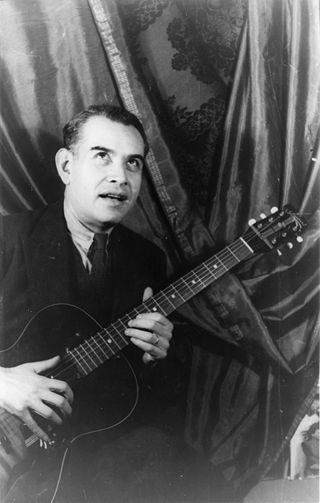
Rufino del Carmen Arellanes Tamayo was a Mexican painter of Zapotec heritage, born in Oaxaca de Juárez, Mexico. Tamayo was active in the mid-20th century in Mexico and New York, painting figurative abstraction with surrealist influences.

Myra Landau was an artist and abstract painter involved in art research. Born in Bucharest, Romania, she was known largely for the work she made in Brazil, then Mexico for many years and later in Italy, Israel and The Netherlands.
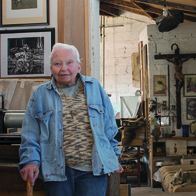
Marysole Wörner Baz was a Mexican painter, engraver and sculptor.

Manuel Felguérez Barra was a Mexican abstract artist, part of the Generación de la Ruptura that broke with the muralist movement of Diego Rivera and others in the mid 20th century.
Fanny Rabel, born Fanny Rabinovich, was a Polish-born Mexican artist who is considered to be the first modern female muralist and one of the youngest associated with the Mexican muralism of the early to mid 20th century. She and her family arrived to Mexico in 1938 from Europe and she studied art at the Escuela Nacional de Pintura, Escultura y Grabado "La Esmeralda", where she met and became friends with Frida Kahlo. She became the only female member of “Los Fridos” a group of students under Kahlo’s tutelage. She also worked as an assistant and apprentice to Diego Rivera and David Alfaro Siqueiros, painting a number of murals of her own during her career. The most significant of these is "Ronda en el tiempo" at the Museo Nacional de Antropología in Mexico City. She also created canvases and other works, with children often featured in her work, and was one of the first of her generation to work with ecological themes in a series of works begun in 1979.
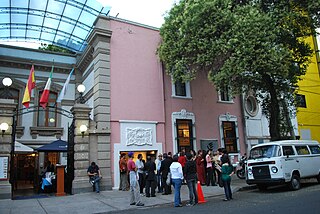
Salón de la Plástica Mexicana is an institution dedicated to the promotion of Mexican contemporary art. It was established in 1949 to expand the Mexican art market. Its first location was in historic center of the city but today it mostly operates out of a building in Colonia Roma. The institution is run by a membership of almost four hundred recognized artists and holds multiple exhibitions each year. Although it operates autonomously, it is part of the Instituto Nacional de Bellas Artes y Literatura.
Carlos Orozco Romero was a Mexican cartoonist and painter who co-founded several cultural institutions in Mexico, including the Escuela Nacional de Pintura, Escultura y Grabado "La Esmeralda". His work was recognized with membership in the Academia de Artes and the Salón de la Plástica Mexicana, and in 1980, with Mexico's Premio Nacional de Arte.

Various types of visual arts developed in the geographical area now known as Mexico. The development of these arts roughly follows the history of Mexico, divided into the prehispanic Mesoamerican era, the colonial period, with the period after Mexican War of Independence, the development Mexican national identity through art in the nineteenth century, and the florescence of modern Mexican art after the Mexican Revolution (1910-1920).
Jesús Reyes Ferreira, (1880-1977) born José de Jesús Benjamín Buenaventura de los Reyes y Ferreira and also known as Chucho Reyes, was a self-taught artist and antiques/art collector and vendor. Reyes Ferreira began painting on crêpe paper, a delicate material not meant to last, as a way of decorating paper meant to wrap sales from his antiques/art store. The decorated paper became popular enough to be sold on its own. Although he began this activity in Guadalajara, he did not produce the bulk of his work until after he moved to Mexico City when he was 58 years old. Here he continued collecting and selling objects such as colonial art and Mexican handcrafts and folk art, being one of the early exponents for the appreciation of these objects. He also spent several hours a day painting. His work was first exhibited in 1950 with his first individual exhibition in 1967 at the Palacio de Bellas Artes after a half century of painting. As a self-taught painter, his works are relatively simple and often are dismissed as folk painting but they were and his aesthetics were praised by famous artists and architects at the time.

Jazzamoart is a Mexican artist best known for his painting which is mostly connected to jazz music in some way. Born Francisco Javier Vázques Estupiñán in Irapuato, Guanajuato, his talent was recognized early and he took his professional name from his dual passions of jazz and art. He is best known as a painter with over 400 individual and collective exhibitions on several continents, but he has also done monumental sculpture, stage scenery and has collaborated with musicians. He lives in Mexico City.
Lilia Carrillo García was a Mexican painter from the Generación de la Ruptura, which broke with the Mexican School of Painting of the early 20th century. She was trained in the traditional style but her work began to evolve away from it after studying in Paris in the 1950s. While she and husband abstract artist Manuel Felguérez struggled to get their work accepted, even selling Mexican handcrafts and folk art to survive, she eventually had her canvas work exhibited at large venues in Mexico City and various cities in the world. Her work was part of the inaugural exhibition of the Museo de Arte Moderno in Mexico City in 1964. After her death in 1974, her work received honors from the Palacio de Bellas Artes and has been exhibited in various venues.
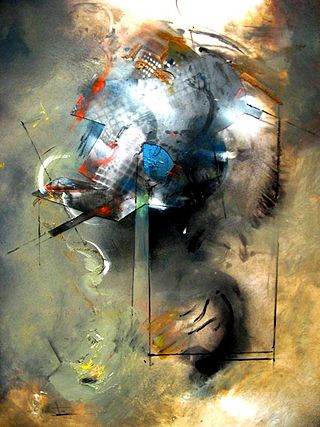
Generación de la Ruptura is the name given by art critic Teresa del Conde to the generation of Mexican artists against the established Mexican School of Painting, more commonly called Mexican muralism post World War II. It began with the criticisms of José Luis Cuevas in the early 1950s, followed by others who thought the established art had become dogmatic, formulaic and nationalistic and the artists too deferential to the government. This new generation of artists was not bound by a particular artistic style but was more interested in personal rather than social issues and influenced by a number of international trends in art such as Abstract expressionism. Early reaction to them was strong and negative but by the end of the 1950s, they had succeeded in having their art shown in the major venues of Mexico. The Generación de la Ruptura had influence on other arts in Mexico, such as literature but it did not end the production of murals in Mexico with social and nationalist purposes.
Gustavo Arias Murueta was a Mexican painter, sculptor and poet, a member of the Salón de la Plástica Mexicana best known for his work in drawing, graphic arts and oil painting. He originally studied architecture at the Universidad Nacional Autónoma de México where he met artists such as Rufino Tamayo, David Alfaro Siqueiros and José Clemente Orozco. In the 1950s, he began to produce artworks, with his first exhibition in 1961. From then until his death he had a career as an artist with individual and collective exhibitions in both Mexico and abroad. While his work had been heavily influenced by Orozco, he was considered part of the Generación de la Ruptura movement.
Enrique Bostelmann was a Mexican photographer known for his artistic work related to social problems as well as the use of objects and concepts from other artistic disciplines such as sculpture in his work. He did commercial work such as publicity, documentary and photographic reproductions of artwork. However, it was his personal projects in which he experimented with subjects, styles and techniques, which were exhibited in Mexico, other parts of Latin America, the U.S. and Europe from the start of his career in the 1960s until his death in 2003. His artistic work is basically of two types: the first exploring social issues and the second conceptualist, using common objects and concepts from other creative disciplines to create photographic images. Although he won no major awards for his work, he was selected as a judge for a number of competition and was inducted as a member of the Salón de la Plástica Mexicana.
Roberto Donis was a Mexican painter and art teacher. He began studying art at the Escuela Nacional de Pintura, Escultura y Grabado "La Esmeralda", but unsatisfied with the instruction, helped organize a student strike. It was unsuccessful and rather than return to school, he decided to go to Morelia to teach. Donis’ art career consisted of exhibitions both in Mexico and abroad, including an important exhibition at the Museo de Arte Moderno in Mexico City and accepted as a regular with the prestigious Galería de Arte Mexicano. His teaching career included directorship at the Universidad Autónoma Benito Juárez as well as helping to found the Taller de Artes Plásticas Rufino Tamayo in the city of Oaxaca. He received several recognitions for his work, including membership in the Salón de la Plástica Mexicana.
Francisco Icaza was a Mexican artist best known for his drawings about his travels and his oil paintings. He spent much of his life living in and visiting various countries around the world. He began painting as a child while living as a refugee in the Mexican embassy in Germany. Icaza exhibited his work both in Mexico and abroad in Europe, South America, the Middle East, Asia and India, most notably at his three major solo exhibitions at the Museo de Arte Moderno in Mexico City. He also painted a mural dedicated to Bertolt Brecht, La Farándula, at the Casino de la Selva in Cuernavaca, a focus of controversy when the work was moved and restored in the early 2000s. He painted additional murals for the Mexican Pavilion at the HemisFair in Texas ; for the Mexican Pavilion at Expo 67 in Montreal, Canada ; and for the Mexican Pavilion in Osaka at Expo '70. This last mural is held at the Museo de Arte Abstracto Manuel Felguérez in Zacatecas City. He was an active member of the Salón de la Plástica Mexicana and also a member and founder of several important Mexican artistic movements including Los Interioristas, El Salón Independiente, and La Confrontación 66.
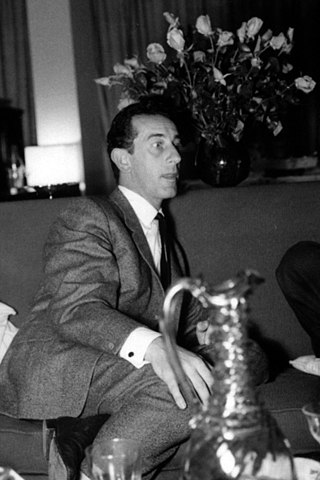
Antonio Peláez (1921–1994) was a Mexican artist of Spanish origin, who began his career in portraits but in the 1950s shifted to abstract art, concerned with texture, color and the use of space. His work was recognized by a retrospective at the Palacio de Bellas Artes, membership in the Salón de la Plástica Mexicana and a tribute by the Universidad Autónoma Metropolitana after his death.
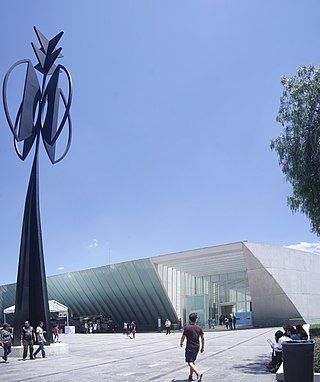
The Museo Universitario Arte Contemporáneo, also known as MUAC, is a large contemporary art museum located within the main campus of the National Autonomous University of Mexico (UNAM). It opened in November 2008 and it is the first Mexican public museum exclusively focused to the arts created in the XXI century.
Teresa del Conde Pontones was a Mexican art critic and art historian.





















